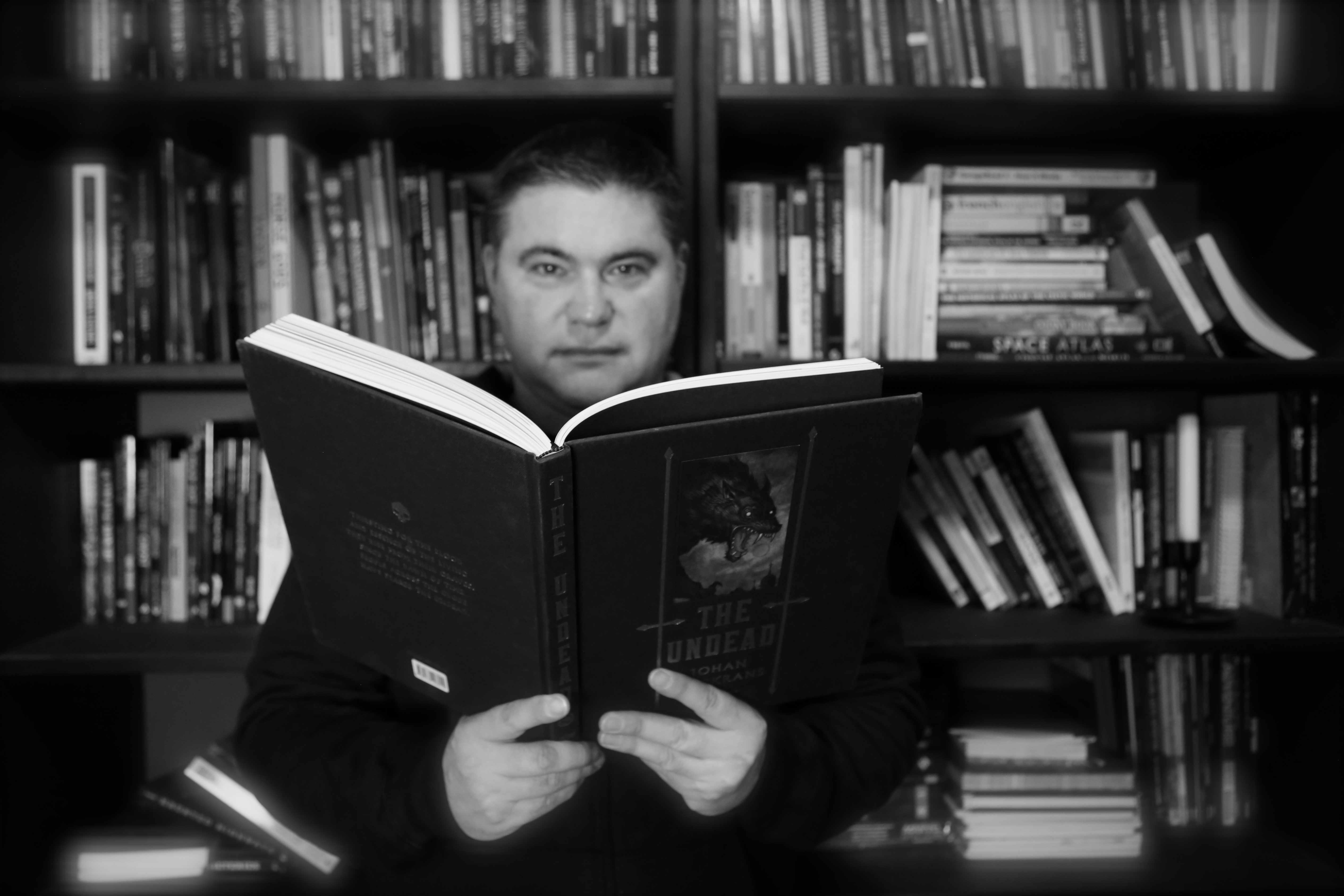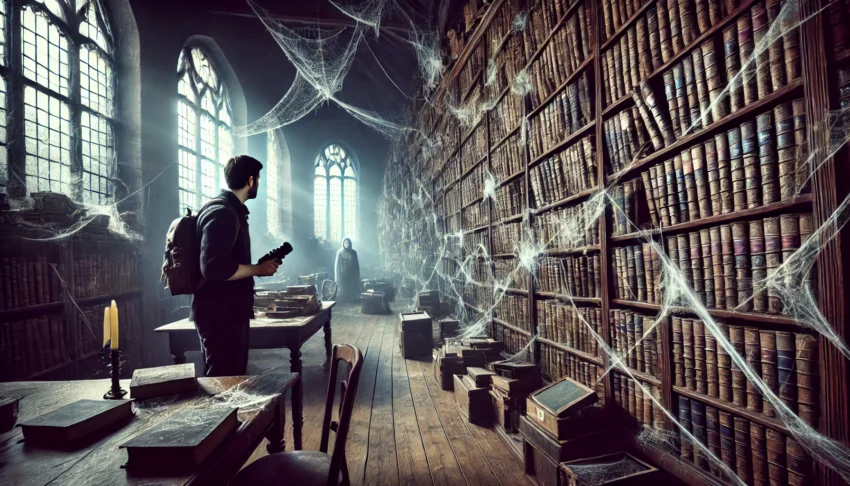
The Ethics of Ghost Hunting
Ghost hunting exploded when Ghost Hunters (the TV show) debuted back in 2004. With that, regular folks grabbed flashlights and audio recorders, and headed into the old, abandoned house down the street. But something else happened: Sensationalized paranormal encounters flooded the airwaves, YouTube, and the Interwebs. Now, I think it’s time to get back to actual investigations, not legend-tripping freak outs. Get more after the jump.
Introduction
Like I said, ghost hunting came roaring back to popularity when Ghost Hunters hit the airwaves in the early 2000’s. With it, a massive wave of hobbyists, thrill seekers, and the (rare) professional began promoting their research.
But we also go some bombastic ghost hunting teams that sensationalized the paranormal. I’m sure you know which ones I’m talking about (ahem … Ghost Adventures).
It taught a generation of ghost hunters that the shock was more important than finding legit evidence, history, research and empathy. With the booming popularity of investigation videos on YouTube, it’s a good time to ground paranormal research in respect and responsibility.
Let’s get started …
Respect for the Dead
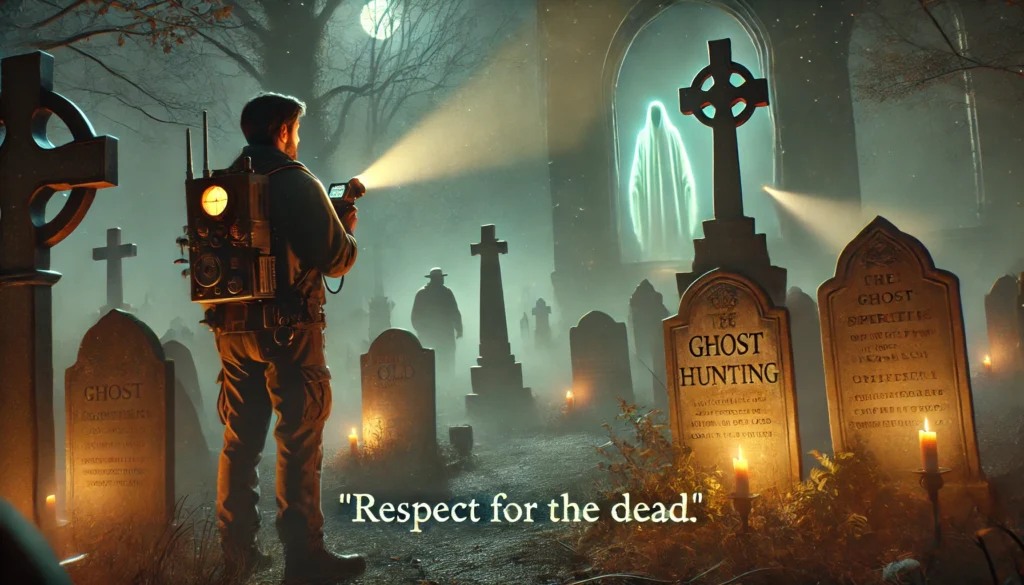
Understanding Intentions
Before you grab a proton pack and head out to bust ghosts (I kid!), why do you want to go looking for ghosts? For me, it was a ravenous curiosity about the unknown and a good thrill. That changed over time, and now I investigate to solve a spooky mystery and to better understand the past.
Your intentions are yours alone to figure out: Don’t let any person or group pressure you into falling in line with their beliefs.
And it’s OK if you’re doing it for a thrill … just don’t expect ghosts to freak out when you freak out.
Communicating with Spirits
One thing that I see ghost hunters do is command a spirit. This is stuff like raising your voice; telling a ghost to touch the gadget; swearing; or just being a douche bag.
This is called provoking: It functions to get a response for the ghost hunter, not to actually understand the spirit. Only pieces of shit do this.
When you want to (effectively) communicate with a ghost, follow these principles:
- Be kind
- Listen and pause for 15 seconds between questions
- Ask politely for the ghost to use a gadget
- Find something in common with the suspected ghost (which means do your research)
- Introduce yourself and say why you’re even in their (haunted) house
Acknowledging Trauma
I think this is something I can do better: Be gentle with the spirit because it might have died under horrific conditions. Take Civil War sites, for example. You’re probably going to communicate with a soldier who died alone on a battlefield. That’s a harsh way to go. Be sensitive to it. Not everyone died with friends and family around them, or passed away sleeping in their nice, cozy bed.
Sharing Experiences
I like to start my EVP sessions with this one—a common link between you and the spirit. What does that mean? Well, I was in the army, so I use my military experience as a way to connect. In other cases, I focus on places we (meaning me and the ghost) may have visited. Heck, you can even bond over food and recipes.
If you do your research, then you can find something to use as a connection point.
Respecting Historic Locations and Private Property
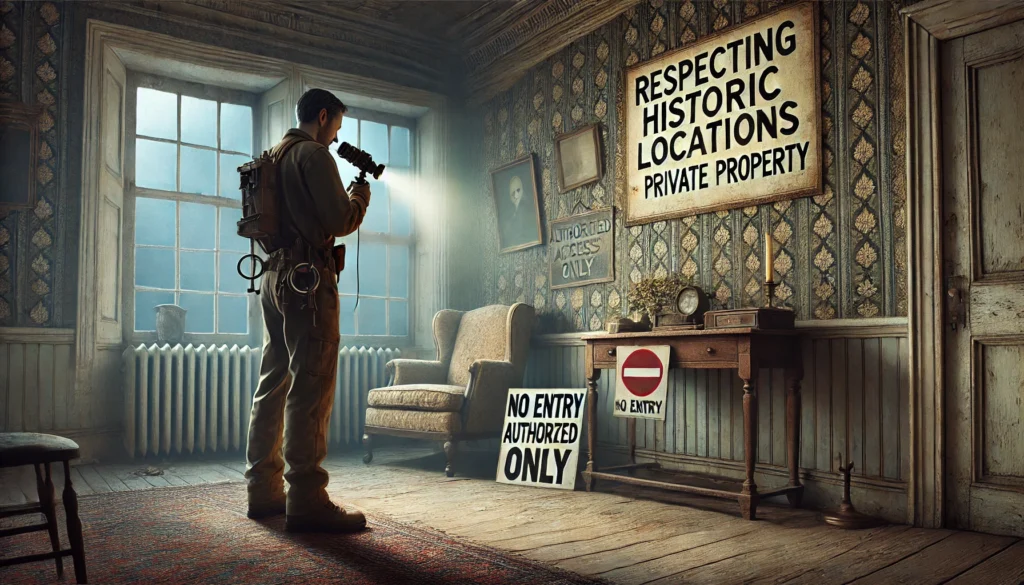
Preserving Historic Sites
Nowadays, this is my top priority as an investigator and documentarian. Day by day, our heritage gets obliterated to make way for apartment buildings and parking garages. It pains me to see so much history get destroyed.
Ghost hunting can help preserve these buildings because it can open up new revenue streams. Money that’s used to preserve, rebuild and rehabilitate old buildings. My documentaries have brought awareness of historic sites people haven’t thought about before (see the Our Haunted Heritage site for more).
You may have to pay to investigate, but the money goes right back into the buildings, which means those ghosts will still be there.
We also need to be gentle with the buildings, too. Don’t leave anything behind. Don’t do anything that can damage it. For one thing, the ghosts may not like it—and you—so, be as kind to the building as you are to the spirits.
Permission and Access
I always get permission to enter a site to investigate and film. For one thing, it keeps you out of legal trouble. Secondly, it helps maintain a good reputation for ghost hunters.
The last thing we need is more police reports of ghost-hunting thrill seekers breaking into a place, trashing it while provoking a spirit, then burning down the place.
This is also a reason I only investigate public places like museums, or places of public accommodation like hotels. There’s far less to worry about when you’ve paid to be there.
Working with Owners and Local Authorities
There’s nothing better than building a relationship with historians, museum curators, preservationists and property owners. For one thing, you get the best stories and best historical resources to help your research.
The other thing is that it helps you get access to even more haunts, based on word-of-mouth and trust.
Supporting Preservation Efforts
Lastly, I always try to help continue the preservation of our (haunted) heritage. If you can, leave a few bucks in the donation bucket or volunteer to help with restorations and rehabilitation. You may end up sweeping the floors by day, and having an intimate conversation with the original owner’s ghost that night.
Balancing Skepticism and Belief
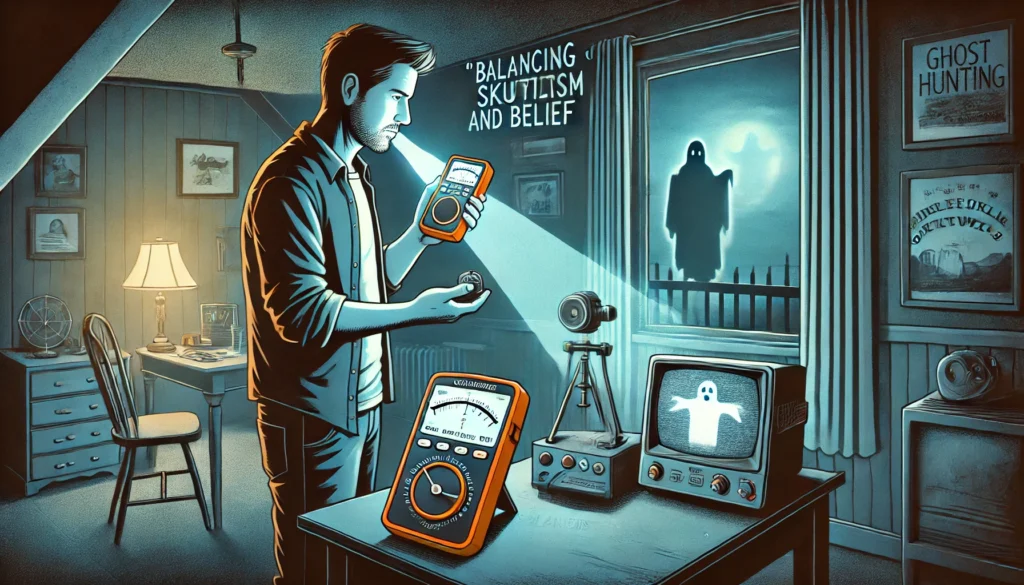
Debunking vs. Sensationalism
When I’m at a haunt, I try to debunk as much as possible. That could creaking, knocks, bangs, outside voices, and gadgets going bonkers. Most old buildings (and new ones) will randomly have these things happen.
Most of the time, you capture evidence during your evidence reviews, like listening back to your audio or watching your video again. The best way to avoid a false positive is to debunk odd sounds and visuals when they happen. It’s as simple as saying, “my stomach growled – not a demon.”
Otherwise, months go by and you forget the little details, and then you claim Aunt Gertie’s house has Satan living in it. I jest, but you get what I mean.
Here’s another common claim: Orbs always get called out as some type of apparition, but that’s not true in 99.5% of cases. It’s usually dust, moisture or a bug. I only show them if there’s 2 or 3 other things that happened at the same time. That would an EVP, gadget going off, or another visual oddity. One data point doesn’t indicate anything.
Sharing Authentic Evidence
When it comes time to publish your findings (and you do publish, right?), I like to leave enough context before and after the apparition manifests/EVP is heard/the gadget goes bonkers. That’s about 15 seconds before and after for a video; 5 seconds before and after for an EVP; and, 15 seconds before and after for a gadget.
Really, just show the evidence as it happened. Sometimes, I put a circle, arrow or callout around it so people can see it better. I don’t think there’s a problem with creating clarity. As for EVPs, I’ll play it once or twice before I put a label that states what I heard. I don’t think you need to do more than that.
Addressing Emotional Responses
I never show when people meltdown if they have a real experience. That seems like exploitation, and I don’t work for TMZ. These are private moments, and no one deserves to have their emotions put on display for your YouTube channel’s views/likes/shares/subscribes.
Respecting Local Communities and Cultural Beliefs

Understanding Local Context and Beliefs
There’s more to research than just history: Culture is another big one.
Some haunts may be considered sacred or hold a significance to the local folks that you didn’t even realize. And that may make ghost hunting taboo.
This is where getting permission beforehand helps out. If you get the OK, bring someone that knows the culture and beliefs. For example, when we filmed at the Tong Building in Barkerville, BC, we had the site archaeologist come with us and point out the sensitivities. None of us really understood Taoism, Confucianism and Buddhism, so it stopped us from unintentionally disrespect their spirits.
Promoting Awareness, Not Fear
This is a big one in the world of cable TV ghost hunting and YouTube videos: Actual paranormal activity is benign. A gadget beeps, a ghostly voice records, and a shadowy figure crosses your camera screen.
When I watch a lot of videos (especially YouTube videos), you get some zany freak outs. While it’s entertaining, the investigator usually freaks themselves out. Anyway, this just creates more urban legends about a haunt. If I were a ghost, would I really want to communicate with a screaming adult I didn’t want in my house to start with? No, I don’t think so.
I think ghost hunting could use more awareness as a way to honor the history and people that lived decades ago, and hopefully inspire folks to preserve our heritage than exploit it.
Side note: Sometimes, truly awful things have happened, and people need to know what horrible things people did to other people in the past. Don’t sugarcoat it. Tell it how these events happened. It’s disrespectful to the victims and their suffering. You want to tell the victims’ stories, not the jagoff that hurt them.
Personal Responsibility and Reflection
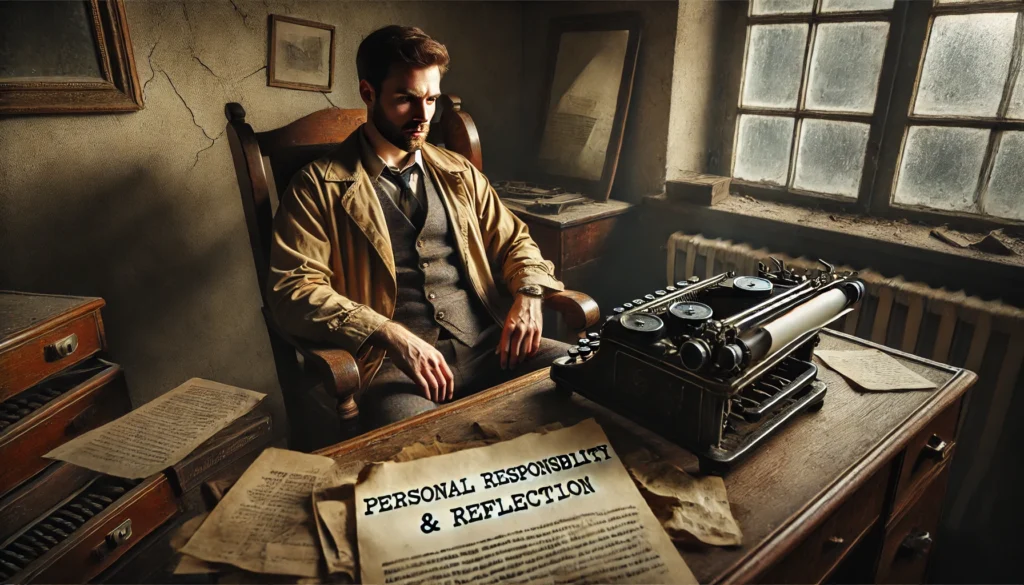
Self-Reflection
Encourage readers to think about their own reasons for ghost hunting and whether their actions align with those motives.
Generally speaking, I ask myself these questions when I get ready to post something:
- Is this critical to the ghost hunt?
- Does it help preserve the history and reputation of the haunt?
- Does it portray the events as they really happened?
- Will it cause people to think differently about any urban legends associated with the location or spirits?
If all the answers are yes, then I’ll post it. Otherwise, it may not be worth it for your reputation or the haunt’s reputation.
Setting Ethical Standards
It’s a good idea to create a checklist of ethical behavior when investigating, evidence reviews and posting videos. I don’t want to say something like the ‘Ten Commandments of Ghost Hunting, ‘ but you get my gist.
For me, here are some basic things I go by:
- Never fake evidence
- Never exploit people, especially their emotions
- Always get permission to enter a haunt
- Always consider how your ghost hunting affects the haunt
- Always use history to guide your investigation
You can always influence new ghost hunters by demonstrating an ethical approach to investigating, and encouraging them to follow your practices.
Conclusion
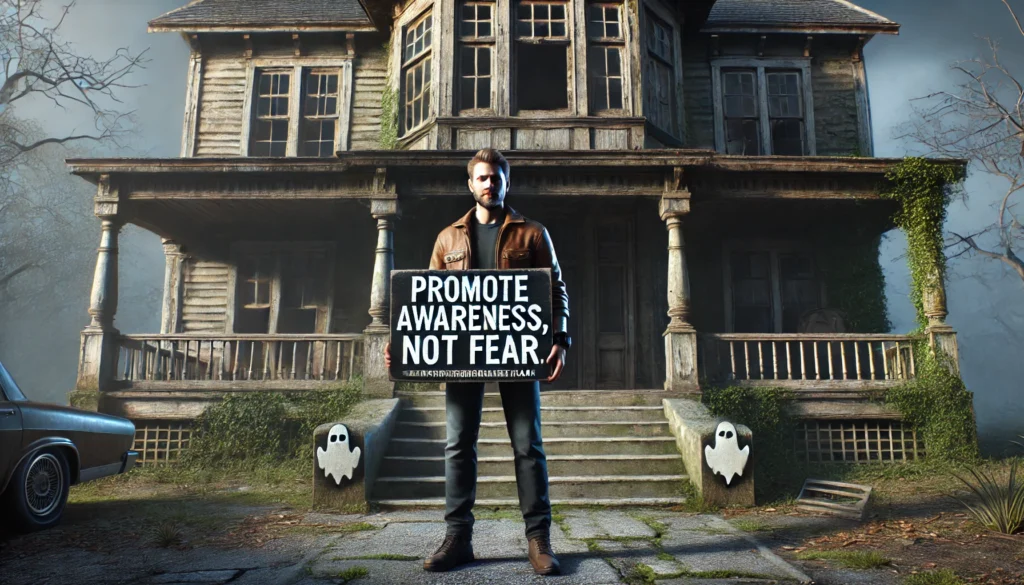
I think the big takeaways are be respectful, do no harm, do your research, and don’t fake anything.
Ghost hunting is a rewarding hobby: You get to learn about the past, preserve it for the future, and have a little fun while doing it.
I hope my sometimes ranting opinions will help you reconsider your ghost hunting evidence reviews, what you post online and the socials, and building relationships with haunts in your area.
Do you have other ethical practices you and your team use? If so, please leave a comment with them below. Thanks for reading Ghostly Activities and take care!
